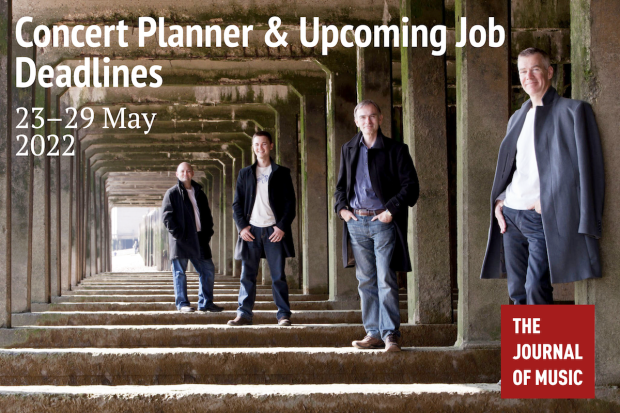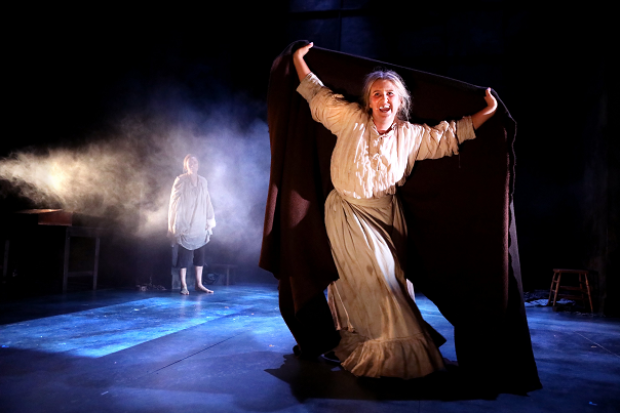
On the set of Once Upon a Time in the West
When is a Symphony not a Symphony?
I shouldn’t, I suppose, have been surprised by the packed, capacity audience, the extra show to meet demand for tickets, the tinge of hysteria in the air, the standing ovations. After all, it isn’t every day of the week (or pretty much any time at all in Belfast) that you find yourself with a legitimate opportunity to put the words ‘living’ and ‘legend’ together in relation to an orchestral concert. But the headlining appearance of the cult, but clearly commercial, Italian composer, Ennio Morricone, at the recent Belfast Festival was certainly such an occasion.
Known principally for his iconic scores for films such as A Fistful of Dollars, Cinema Paradiso and The Mission, Morricone’s first visit to the city, to conduct a brace of concerts featuring music from his own soundtracks, generated the kind of over-heated anticipation usually reserved for visiting pop stars. Standing ovations framed a heavy-duty concert of more than two hours in length that startlingly mixed the expected with the decidedly esoteric. Had anyone in the appreciatively attentive audience actually seen the 40-year-old, unreleased-outside-Italy, unsold-to-television surreal comedy H2 S, whose music they were happily listening to for the first time?
If nothing else, Morricone’s reception in Belfast offered a measure of the current appeal of film music. But it also delivered proof of more than that. As a model for creating opportunities to hear new and unfamiliar music, a concert devoted to the largely untapped, century-long repertoire of film music offers enormous scope for orchestras. It offers them vital access to an audience that has shown itself highly amenable to the transference of music from the cinema into that foreign and considerably more problematic arena: the concert hall.
Unique though Morricone’s concert may have been to Belfast, the profile of music originally written for film in Irish concert halls has become an increasingly familiar proposition. Looming over the horizon is the first visit to Ireland by the triple Oscar, five-times Grammy Award-winning Michel Legrand.
Does-what-it-says-on-the-tin programmes with titles such as The Good, The Bad and The Ugly and Final Frontiers now form a regular part of the RTÉ Concert Orchestra’s seasons. As have programmes devoted to the music of John Williams, John Barry and Shaun Davey. In December, it played a live accompaniment over five nights to The Wizard of Oz for the second year in succession.
The Ulster Orchestra has also been taking its audience to the movies for some time now, offering a mix of Hollywood pops and Art House diversions, most recently accompanying screenings of Charlie Chaplin silents with newly-composed scores by Carl Davis.
The acknowledgement and accommodation by orchestras of the cinema soundtrack has been belated and long overdue. Hollywood, after all, long ago appropriated the symphony orchestra for its own uses. Over time, a cinematic canon has accrued, one with musical riches of its own that deserve exposure and reward scrutiny in the concert hall.
That shouldn’t surprise. The history of the Hollywood soundtrack, albeit often at several steps removed, mirrors and mimics the history of twentieth century symphonic music. Strikingly, and significantly, it also emphatically underlines the abiding appeal of the orchestra as, quite literally, an instrument of mass appeal.
It was a generation of musically articulate European émigrés that created and cultivated the Hollywood sound. Max Steiner was taught by Mahler and Brahms. Erich Wolfgang Korngold studied with Zemlinsky and was anointed by Mahler ‘a musical genius’. Dimitri Tiomkin had been a pupil of Busoni. Exiled from their homelands they may have been, but their musical heritage steadfastly remained with them.
Steiner, the so-called ‘Father of Film Music’, wrote more than 200 scores. It was he who produced the first soundtrack masterpiece, for King Kong in 1933; a stunning, dissonant-drenched exercise in neo-modernism that was pulsing through the bloodstream even before the flickering black-and-white images it accompanied had reached your eye.
Korngold exalted in making full use of the rousing symphonic swagger of mainstream European romanticism. His scores for The Private Lives of Elizabeth and Essex and The Sea Hawk are saturated with the influence of Wagner, Richard Strauss and Puccini, and boast a structural sophistication that many symphonies all too palpably lack.
Hollywood remained enamoured of the symphony orchestra throughout its own long Golden Age. So much so, that when musical fashions were challenged and changed in the concert hall, the cinema soundtrack also found itself keeping in step with new idioms. Leonard Rosenman, a one-time student of Dallapiccola and Schoenberg, adeptly employed atonal techniques and modes on some of the most unlikely films – subtly so in East of Eden, sardonically in Beneath the Planet of the Apes.
And closer to home Seán Ó Riada’s score for George Morrison’s seminal documentary, Mise Éire, exploited the conventional idioms of symphonic writing to concoct a provocative intermingling of Irish traditional idioms with the language of European symphonic modernism, infusing all with allusive echoes of Mahler, Sibelius and even Vaughan Williams.
Some dogmatically insist that the cross-fertilising of the concert hall with the cinema is akin to aesthetic miscegenation, and consequently to be avoided. That Cassandra of modern music, Norman Lebrecht, insists that ‘the essence of movie music is antithetical to art’, an argument best answered by the doyen of contemporary film music and agenda-changing champion of the symphony orchestra in Hollywood, John Williams: ‘If it weren’t for the movies, no-one would be able to write this kind of music anymore!’
Just as nobody frets anymore that opera houses now regularly stage work originally intended for Broadway, so orchestras are right to reclaim a rich, varied and satisfying part of the repertoire that has languished in niche obscurity for too long. The generation of cinema-goers who grew up with the bold, expressive grandeur, the bombast and the poetry, of the symphonically-fuelled soundtracks to Jaws, Star Wars, Gladiator and The Lord of The Rings are now of an age where they are presumed to (and usually do) out-grow pop music and look for greater sophistication, greater substance and greater rewards from music.
If audiences can accept the sound of a symphony orchestra in a cinema, surely enticing them into a concert hall to experience and enjoy the same – and introduce them to the classical repertoire – is something worth pursuing.
When is a symphony not a symphony? When it is a film soundtrack.
Published on 1 January 2009
Michael Quinn is a freelance music and theatre journalist based in Co. Down.














